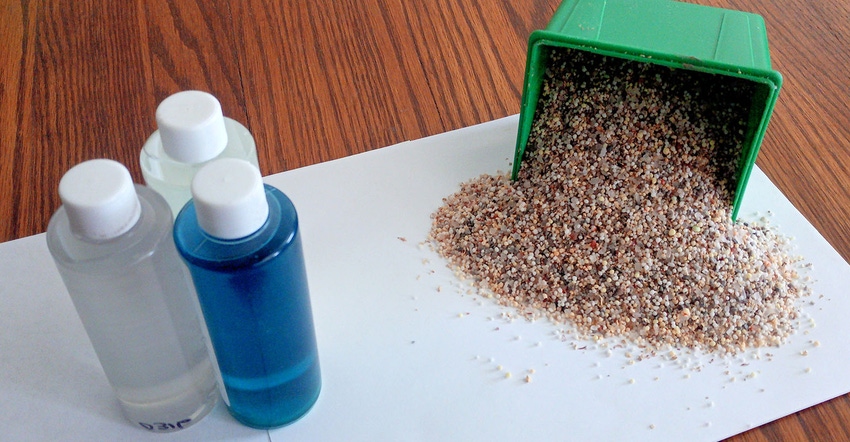February 1, 2019

Several years ago we deleted side-by-side fertilizer from our planter in favor of in-furrow placement. We had recently up-sized our planter. Going in-furrow meant less equipment to purchase, but the move was mainly out of convenience. Lower volume application per acre meant less product we had to take to the field and less time spent filling up.
We didn’t actually save any money on the starter application as low salt in-furrow fertilizers are usually considered a ‘premium’ product, costing 2-4 times what a traditional side-by-side starter product costs.
For those readers unfamiliar with row starter here is a quick summary: Row starter is fertilizer that is applied with the planter at the same time as planting the seed. There are two main ways to do this: side-by-side and in-furrow. Side by side is also referred to as 2x2. This indicated where the fertilizer is placed -- 2 inches to the side and 2 inches below the seed. You can also have 3x2, 2x1, 2x0 -- you get the general idea.
In-furrow often gets referred to as pop-up as it is applied directly in the seed trench where the seed is planted.
In the last 4 or 5 years, we have reversed course. We put the steel back on the planter and eventually ended up doubling it, going to 2x2x2 (starter on both sides of the row). There is data that supports this move.
It used to be commonplace to have dry fertilizer on a planter. Fertilizer would come in bags (like people use for their yards), or be delivered in bulk. Fertilizer would then be poured, augered or even shoveled into tanks on the planter. But as machines got larger, and as a matter of convenience, dry side-by-side fertilizer has gone by the wayside.
What we’ve been struggling with this week is the cost of the liquid side-by-side. A liquid product is refined more than dry; that adds cost. However, I’m sure a lot of the additional cost is a ‘convenience premium’.
For example, when I compared comparable liquid and dry alternatives, on a per acre basis, the liquid was as little as $5 more and as much as $25 more! That comparison doesn’t include any micronutrients which are always less expensive in the dry form.
So, we spent a lot of time this week trying to figure out how we can make the move to dry fertilizer. But in today’s marketplace, there are few large-frame machines that have dry capacity.
It appears likely this is a move that will have to be made the next time we change or rebuild planters.
When or if we decide to go down this road, we figure it will be a 12 to 18 month process as the planter will have to be ‘custom’ built. Though it won’t be cheap, the move will pay for itself. We will also have more flexibility fertilizer blends, and adding micronutrients will be more economical.
The opinions of the author are not necessarily those of Farm Futures or Farm Progress.
About the Author(s)
You May Also Like






